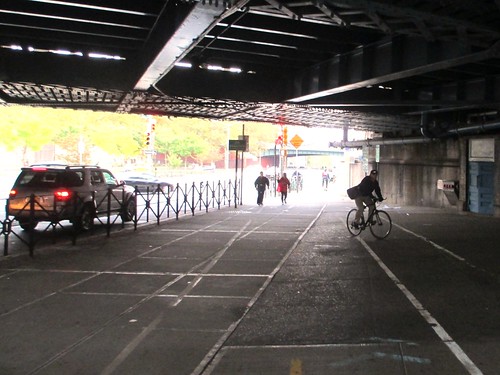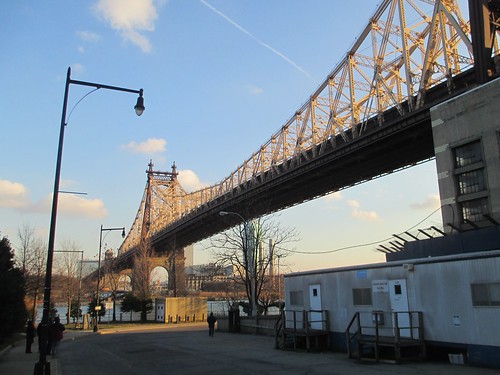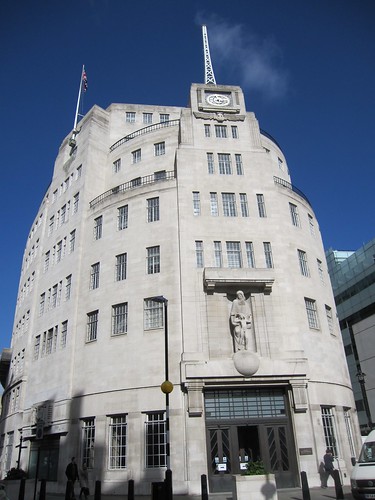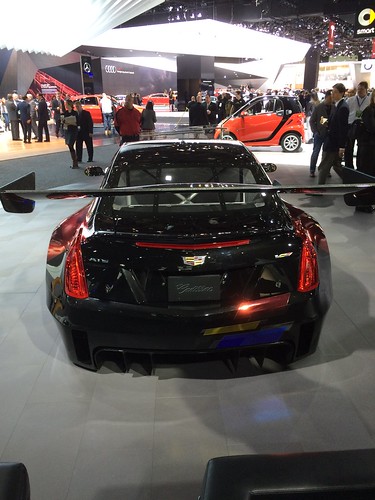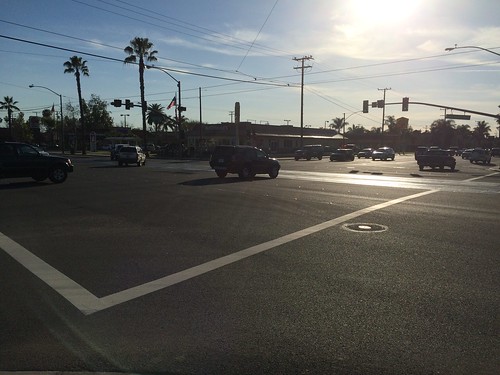When I’m riding my bike home in the evenings and have come
down the long, spiral ramp off the Manhattan
Bridge into Brooklyn ,
I often find myself waiting at a pedestrian crossing nearly right under the
bridge’s first girders. Given that the bridge carries four busy subway tracks
as well as three roadways, a pedestrian path and a bike path, that means I
frequently hear the ear-splitting din of a B, D, N or Q train crossing just
above my head.
But the noise’s effect isn’t what one might imagine. A joint
in the tracks means that the wheels produce an exquisitely syncopated rhythm.
A-ONE-and-a-two-and-THREE-and-a-four clack the four successive axles as the
joins between the cars roll overhead. The rhythm is so compelling that
sometimes, when no-one’s looking, I permit myself a little dance with my
shoulders.
My jiggling shoulders generally prompt a second thought,
however. The sound turns my mind to how cyclists in cities like New York or London
or anywhere else where cycling’s an on-road, minority activity, have to attend closely
to the rhythm of the city around them. In such an unforgiving environment, it's vital to pick up the cues from
the surrounding, constantly-changing city about when and where to cycle fast and
confidently and when to exercise maximum caution and restraint.
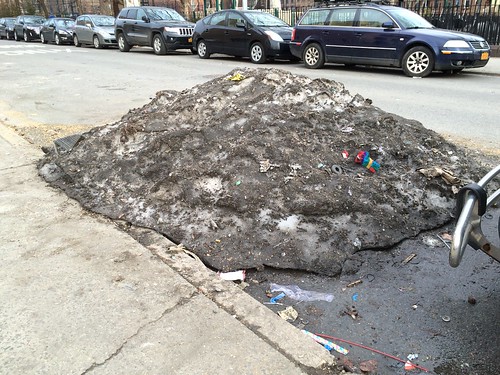 |
| Call it snirt, call it snarbage: we New York City cyclists have been dodging a lot of snowy, rubbishy mounds like this in the last few weeks and months. |
Many of the patterns I've come to recognise are things that restrict me. During the recent long, bitter winter, for example, I noticed myself
learning after each snowfall the distinctive pattern of snow clearance and how
it affected each cycle lane and where I positioned myself on the road. An event
like last week’s sad gas explosion and fire in the East Village
Yet there’s a pleasure, after two-and-a-half years and at
least 10,000 miles of New York City cycling, to having learned to recognise –
and anticipate – so many of the city’s moods. The sudden surges in traffic in
various places; traffic’s unexplained disappearance in others; the surge in
grumpiness among drivers in certain conditions: all reflect, I know rationally,
a multitude of individual decisions. But they can feel so concerted and sudden
that they almost feel like the actions of New York City herself. A cyclist riding through the city
has to undertake a kind of dance with her, getting in step and learning how she
moves.
I had something of the same feeling about London when I lived there and enjoyed an
encyclopaedic knowledge of much of its backstreet network of quiet cycle
routes. But New York
is a far more mercurial dance partner – hotter in summer, colder in winter,
denser, with far more dangerous streets and more prone, it seems to me, to
catastrophic mishaps. It feels far harder to learn to get in step with her –
and a more satisfying achievement to have learned to do so.
That makes all the more enjoyable those moments of bliss one
experiences from time to time riding a bicycle – the moments when the city
seems to slip by and it is the other forms of transport that seem momentarily
absurd.
 |
| The kind of weather that's slowing me down particularly dramatically at present: Fifth Avenue in a light rain shower, perfect for creating a treacherous surface |
There is, nevertheless, a dissenting voice inside my head that
wonders how much I’m dressing this phenomenon up. I sometimes wonder if my
having got to know the city better simply means I’m growing more fearful. I
notice how I’m increasingly stopping to let cars past on the narrowest roads
where I know drivers are most aggressive. I’m less often taking the middle of
the lane and forcing them to slow down to, say, a 20mph crawl in a 20mph limit.
I noticed myself easing off significantly on my speed in some recent rain
showers, feeling that the streets, still greasy with the detritus of winter,
might be particularly treacherous. I find myself waiting behind motor vehicles
as lines of other cyclists slip through narrow gaps between them and parked
cars or the kerb.
Perhaps, a voice in my head says, I'm feeling the
familiarity of the bullied with the bully. Maybe I’ve let the city’s toughness
beat me into mental submission.
The dissenting voice grew particularly loud on March 23 when
I had to cycle from home first thing in the morning to a conference right by
the south-eastern corner of Central Park . I
tried to fall in step with the city. I used my knowledge of the position of the
many new potholes that have appeared over the winter to decide when to dodge
out of the cycle lane and into the car lanes. I used my experience of the weather
to look out for the inevitable ice patches, products of a mixture of the cold
and a hundred little thoughtless sloshings out of buckets into the cold street
or spillings of drinks.
Already feeling slightly ill before I started, however, I began
to feel a little defeated. The corner I was visiting – 5th Avenue and East 60th St
– is one of New York ’s
least accessible by bike for anyone arriving from the south. Having prided
myself on finding a viable but unconventional bike route up 1st avenue
to 55th street then up Park Avenue to 60th – I found
myself dismounting and pushing rather than deal with the gridlock (and yet more
ice patches) on Park Avenue.
The experience was a useful reminder that, in an ideal New York City , there
would be no real skill to cycling in step with the city’s gyrations. Far more
experiences would be like riding along the best sections of the Hudson River
Greenway – a chance to travel quickly around New York , put no strain on the city’s
environment or infrastructure yet take in the city’s excitement. I was torn
between cursing three things: my own cowardice in intimidating conditions, the
city’s unwillingness to provide a joined-up cycling network and my own stubborn
refusal to give up cycling in the face of these facts.
Yet, as I pondered at the end of the day how to get home after my unpromising outbound trip, I
realised I was only a few blocks from the Queensboro Bridge Brooklyn .
I covered the route, though it was long, quickly and
efficiently. I took routes through Greenpoint and Park Slope that I’d devised
only after many attempts and much trial-and-error. I was able to enjoy the
grandeur of the panoramas over the East River
and take in the city’s details. I saw the Polish shops in Greenpoint, the
Yiddish writing on the buses for Hassidic Jewish schoolchildren in South
Williamsburg and the soul food restaurants run by African-Americans in Fort Greene
I grew briefly frustrated with a cluster of visiting-hour cars
outside Methodist
Hospital 6th St
in Park Slope but soon slipped past them too and sped, unmolested, down the
hill towards home.
It was, in short, the kind of rare, transcendentally
enjoyable trip that explains my refusal to give up. It’s the kind of experience
I may, if anyone asks me soon if he or she should cycle in the city, recount as
evidence for the “yes” side.
But I probably won’t dare articulate my true feeling about
how such a near-perfect journey feels. In my head, New York City
